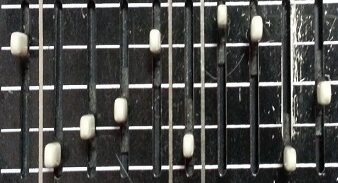- Tune the bass. Tune the bass. Tune the bass. Everything harmonically else in the song is going on top of the bass. If it is a little bit our of tune, then the rest of your tracks are not going to sound right.
- I like to tune the bass just a little bit flat, so that way when you really start digging in it does not go too sharp.
If you can get both a DI signal and a mic on a cabinet go for it. If you can only get one, then it is your choice. I very much find that I like the sound of a DI box at the very least, before the USB sound interface. If I can avoid going truly direct into the interface I do.
If the player is really digging in with a pick, or lots of sloppy slap, then a condenser might not be the way to go, but a good condenser on the cabinet is really the way to go.
Some decent compression on bass as well. Sometimes on the recording a decent 20:1 compression is good. A quick release is good if the bass part is fast and syncopated. An aggressive attack on the compression can help with some of the transients on a bass. This is especially true with a pick. Also pay attention to where the bass player is playing. Closer to the bridge is going to have a brighter sound, and stronger attack than if the player is closer to the neck pick up. This will have a slower sounding attack, and a deeper more bottom, resonant tone.
Try a multi-band EQ before the compressor to shape the sound a little bit. There is a basic 3 channel one in ableton.
- unless you have a 5 or 6 string bass, you might boost around 60Hz. With only a 4 string you are not going to have the super low bass that these types of basses will have. Remember that the older Analog EQs would boost the frequencies around the chosen one a little bit as well.
Check out Warren Huart for more studio lessons and learning programs.
